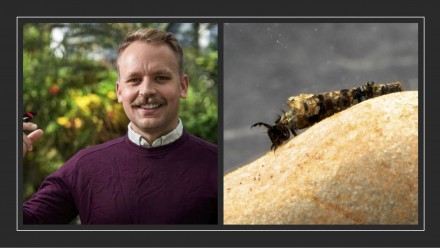Threading links between the silk genotype and phenotype in caddisflies, nature’s underwater architects
Larvae from the insect order Trichoptera (commonly known as caddisflies) have captured the imagination of biologists for centuries due to their intricate construction of underwater cases and shelters that are assembled from sediment and plant matter from the stream and lake beds. Like their closest relatives, Lepidoptera (butterflies and moths), caddisflies use modified salivary glands to secrete silk proteins, which are assembled into fibres, which serve as the mortar for their underwater architectures. However, unlike the silk used by most lepidopterans, caddisfly silk is adapted for underwater use. The gene encoding the primary silk protein is large, blocky, and repetitive, which, historically, has made it especially difficult to sequence and assemble. However, new, high quality long-read sequencing technologies have enabled the sequencing and assembly of these long genes, giving an unprecedented opportunity to link the silk genotype and phenotype. In this seminar, I will explore the evolution of these highly repetitive silk genes and begin to thread together links between the silk genotype and phenotype in caddisflies, nature’s underwater architects.
About Paul
Paul Frandsen is interested in evolutionary genomics and phylogenetics. His most recent work has focused on the genomic basis of silk production in caddisflies and lepidopterans and the use of genetic techniques in biodiversity monitoring. He also has considerable expertise in genome sequencing, assembly, and annotation.
Paul is visiting ANU in Feb 2025. His visit is funded by the Centre for Biodiversity Analysis, hosted Rob Lanfear (ANU). Please get in touch with Rob if you would like to meet with Paul during his time in Canberra.





